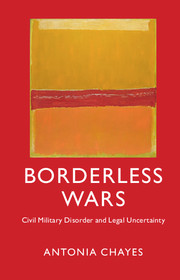Book contents
- Frontmatter
- Dedication
- Contents
- Foreword
- Acknowledgments
- 1 Introduction
- 2 Civil-Military Relations: From Theory to Policy
- 3 The Counterinsurgency Dilemma
- 4 Civil-Military Implications: The Demands of a Counterinsurgency Strategy
- 5 Legal Implications of Counterinsurgency: Opportunities Missed but Not Lost
- 6 Counterterrorism: The Unquiet Warfare of Targeted Killings
- 7 Civil-Military Issues in Targeted Killing by UAVs
- 8 The Legal Underpinnings for Targeted Killing by UAV: Framing the Issues
- 9 Opportunities for Stepping Forward
- 10 Cyber Attacks and Cyber Warfare: Framing the Issues
- 11 Implications for Civil-Military Relations in Cyber Attacks and Cyber Warfare
- 12 Legal Implications of Cyber Attacks and Cyber Warfare
- 13 International Cooperation on Training Wheels
- 14 Conclusion: The End Is the Beginning
- Index
3 - The Counterinsurgency Dilemma
Published online by Cambridge University Press: 05 September 2015
- Frontmatter
- Dedication
- Contents
- Foreword
- Acknowledgments
- 1 Introduction
- 2 Civil-Military Relations: From Theory to Policy
- 3 The Counterinsurgency Dilemma
- 4 Civil-Military Implications: The Demands of a Counterinsurgency Strategy
- 5 Legal Implications of Counterinsurgency: Opportunities Missed but Not Lost
- 6 Counterterrorism: The Unquiet Warfare of Targeted Killings
- 7 Civil-Military Issues in Targeted Killing by UAVs
- 8 The Legal Underpinnings for Targeted Killing by UAV: Framing the Issues
- 9 Opportunities for Stepping Forward
- 10 Cyber Attacks and Cyber Warfare: Framing the Issues
- 11 Implications for Civil-Military Relations in Cyber Attacks and Cyber Warfare
- 12 Legal Implications of Cyber Attacks and Cyber Warfare
- 13 International Cooperation on Training Wheels
- 14 Conclusion: The End Is the Beginning
- Index
Summary
What passing-bells for these who die as cattle?
Only the monstrous anger of the guns.
Only the stuttering rifles’ rapid rattle
Can patter out their hasty orisons.
Wilfred Owen, “Anthem for Doomed Youth”The widespread terrorist attacks in the early part of the twenty-first century and the evolving responses to those attacks changed not only the security environment but also the relationship between civilian and military responses to terrorism. Approaches dubbed “counterinsurgency” and “counterterrorism” have been dominant at different times since September 11, 2001. Both approaches have blurred the lines between tasks that have traditionally been military and those that have been civilian. And in both counterinsurgency and counterterrorism, the division of responsibility between civilians and military lacks a clear legal basis, although the role issues and legal problems differ. The absence of firm legal underpinnings impedes the civilian-military cooperation necessary for mission success. Legal clarity is no panacea for lack of policy clarity, but it might improve some problems of role definition and confusion.
Twenty-first-century counterinsurgency represents a radical adaptation of recent U.S. war-fighting strategy and tactics, as well as a revival of an approach that had been developed in the past but abandoned. It upended traditional notions of civilian control and civil-military relations. As a strategy, it is not new. It was and remains a radical departure not only from General Westmoreland's use of massive force in Vietnam but also from the Powell-Weinberger doctrine of overwhelming force of the 1980s and 1990s. Because of the need for a militarily weaker enemy to rely on the population, counterinsurgency doctrine focused on winning over that population, rather than on actions only aimed at destroying the enemy. This approach fired the U.S. imagination after the publication of the U.S. Army/Marine Corps Counterinsurgency Field Manual (FM 3–24) in 2005. But it promised more than it could deliver. Many of the difficulties that counterinsurgency had encountered in the past were neither confronted nor addressed. Unsurprisingly, its brand of counterinsurgency has proven very difficult to implement.
- Type
- Chapter
- Information
- Borderless WarsCivil Military Disorder and Legal Uncertainty, pp. 25 - 30Publisher: Cambridge University PressPrint publication year: 2015



